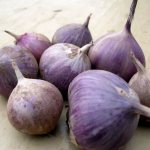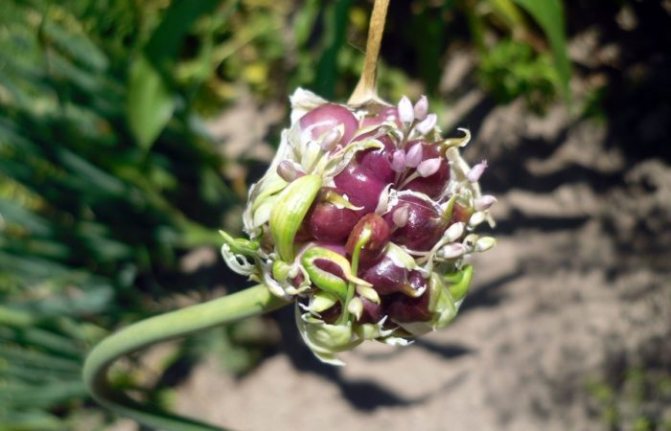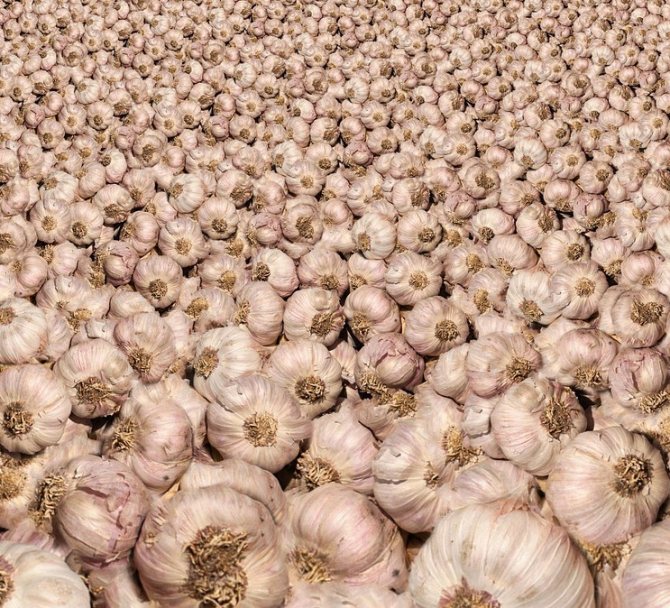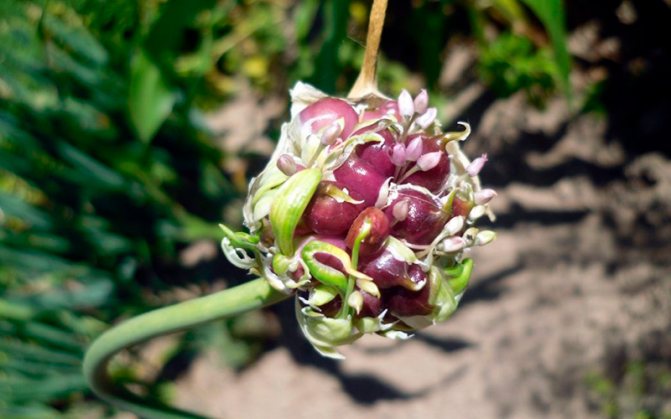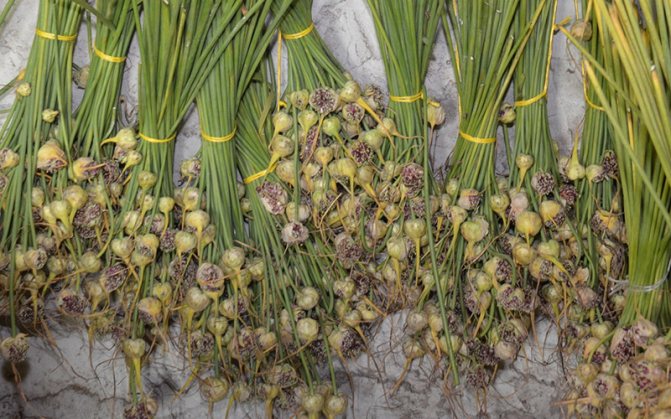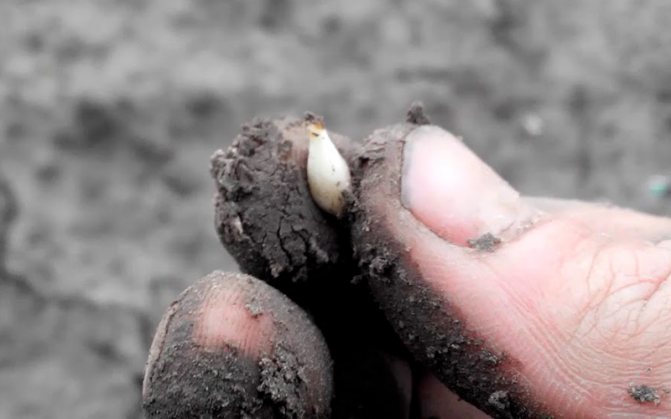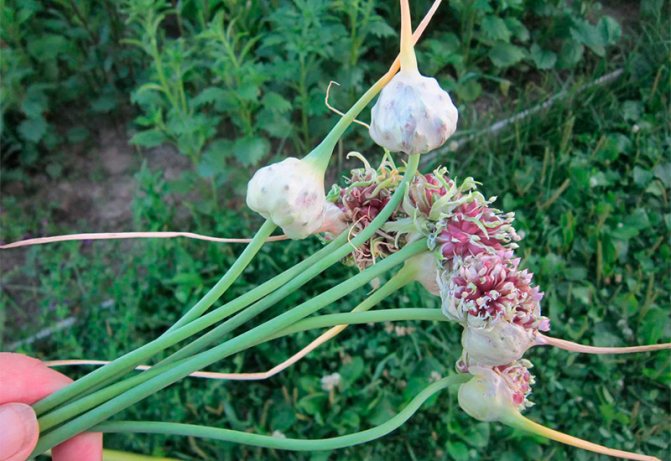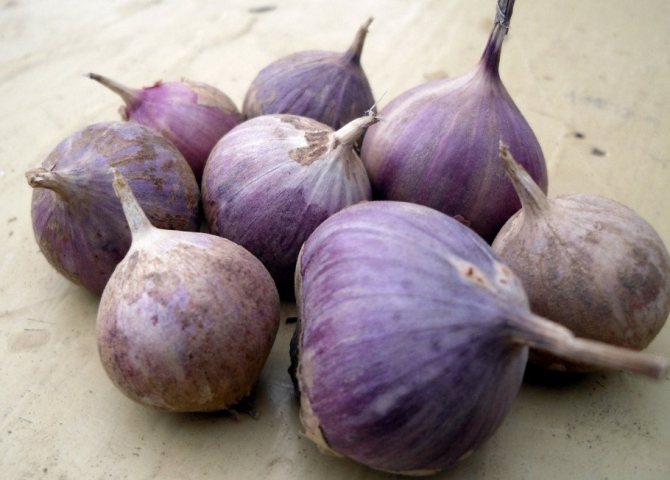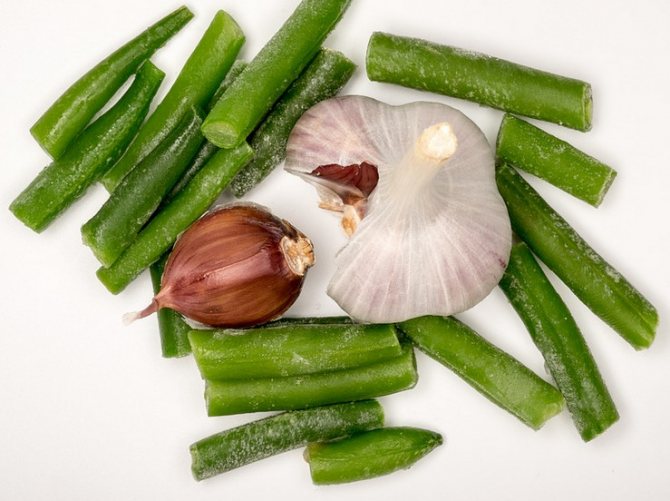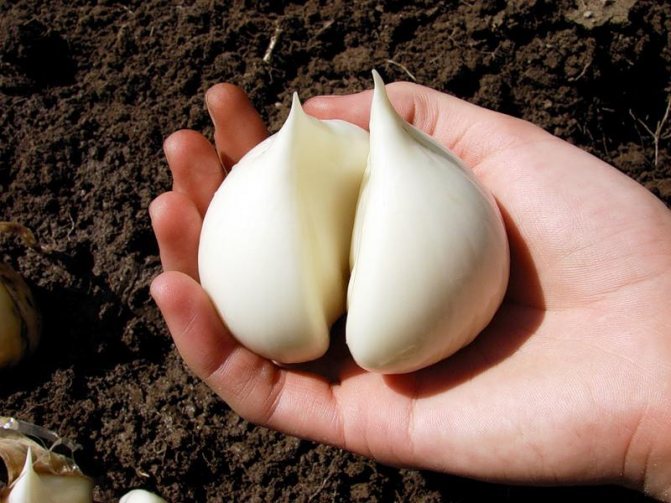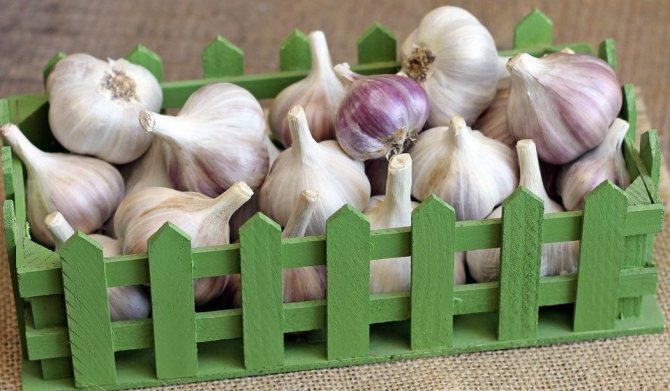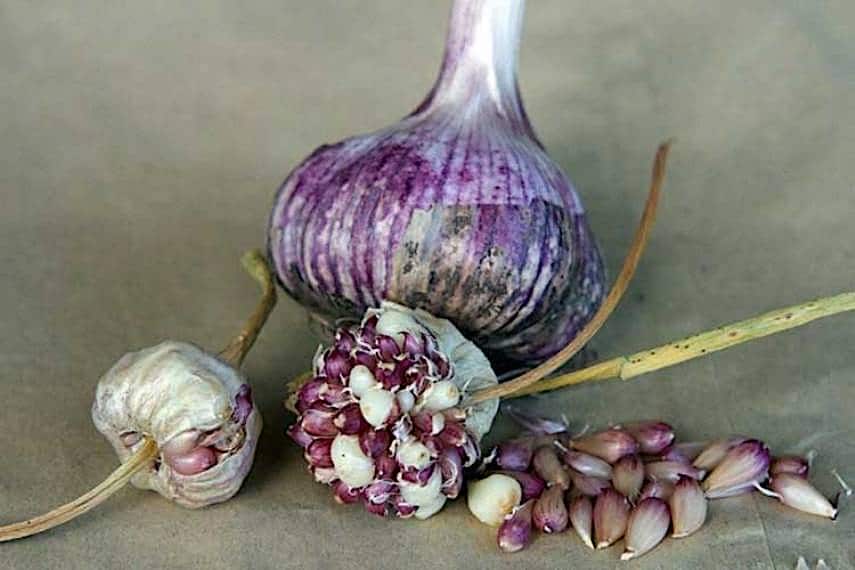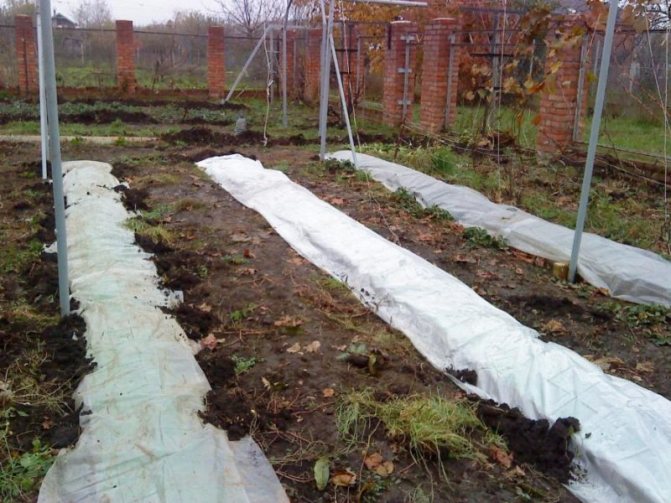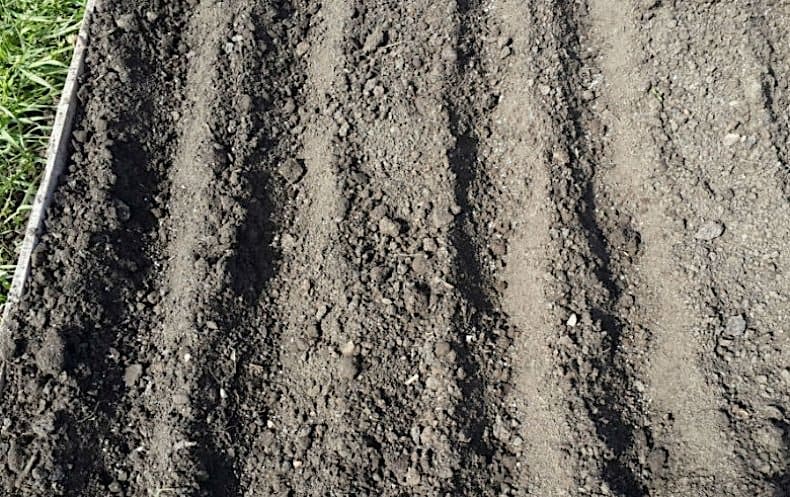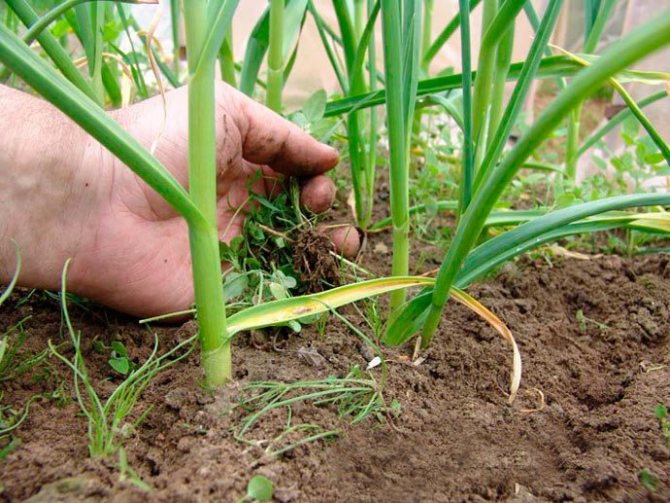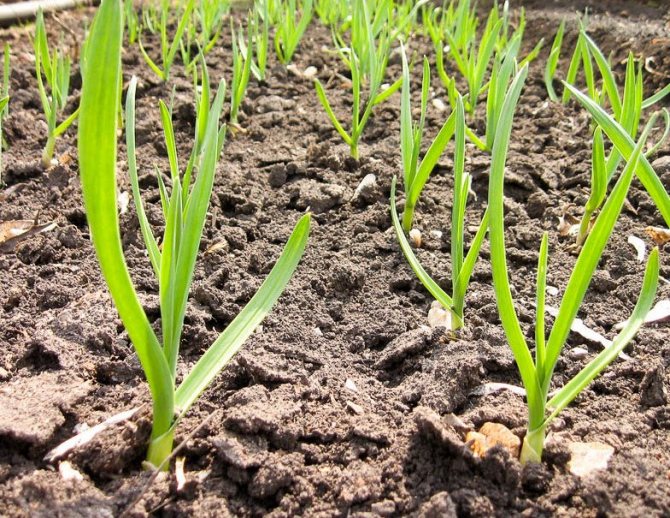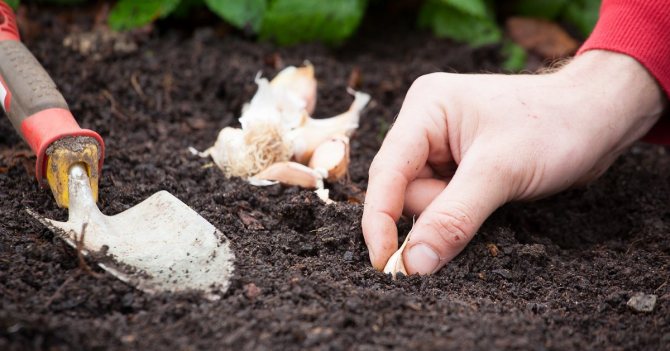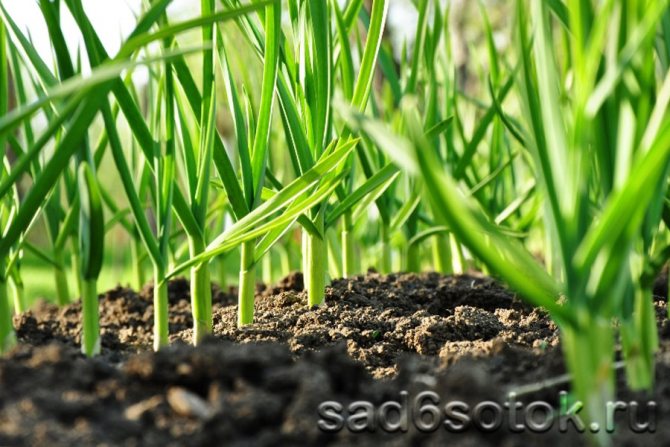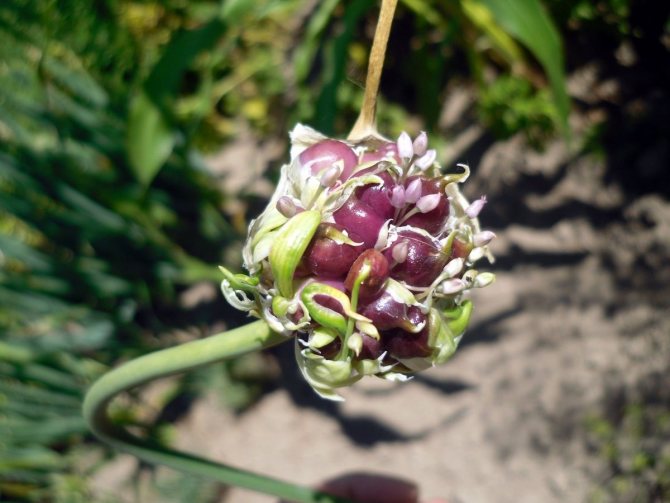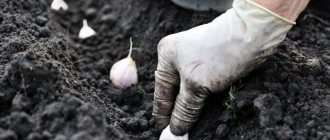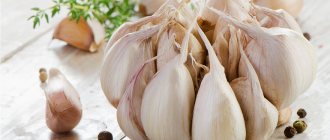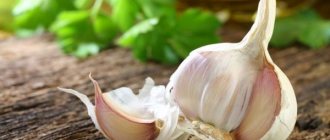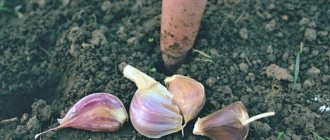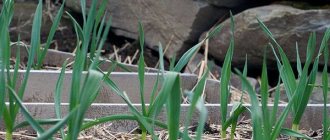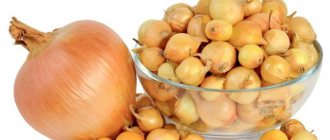Home / Garden / Bulbous
Back to
Published: 01.10.2019
Reading time: 7 minutes
2
165
Year after year, the gardener, collecting the harvest of garlic, calibrates the heads: the best teeth - for planting, the smaller ones - for processing or storage. Unquestioningly observes agricultural techniques: the timing of planting, fertilizing, watering. Breaks out arrows in time to get larger planting material. But from year to year, the garlic is getting smaller. A favorite variety, when it is resistant to infections, pests, for some reason loses its immunity, although crop rotation in the garden is held in high esteem.
Disappointed, the summer resident goes to the store, looking for a new - larger and healthier - planting material. In the queue he complains to like-minded people: “How so! The garlic was excellent. " And, if you're lucky, there will be someone more experienced among the sympathizers, who will tell you about air bulbs - garlic bulbs.
- 1 Bulbs of garlic - what is it?
- 2 When to collect bulbs of garlic for seeds
- 3 When the bulbs are planted 3.1 Planting garlic bulbs in the fall
- 3.2 Is it possible to plant garlic bulbs in spring
The process of propagation of garlic bulbs
Shooting varieties of garlic in early summer release a fairly strong peduncle (arrow), which ends with an inflorescence consisting of 20-100 ovaries of air bulbs (bulbs). Their weight is insignificant and reaches from 0.5 g to 5 g. Once in the soil, the bulbs during one vegetative period grow into a rather large bulb not divided into cloves (one-toothed).
Depending on the size, one-toothed teeth are classified into the following classes:
- 10-12 cm - the first;
- more than 12 cm - the second.
Both classes in the next growing season give a full, divided into chives, a head of garlic. Smaller one-toothed teeth may not split into teeth in the next period, but later they are used as planting material that has retained all the characteristics of the variety.
Agricultural technology of autumn planting
According to the agricultural technology of culture, autumn planting is preferable to spring planting, since the seed material needs mandatory stratification. And in winter it takes place in natural conditions. Without stratification, the grown monodentis do not possess delivery immunity and will not be able to maintain their consumer properties for a long time.
Planting garlic in the fall before winter with bulbs is carried out at the same time as with cloves. You can determine them if you roughly know the climatic norms for the establishment of permanent snow cover. Well, try to plant bulbs of winter garlic two weeks before the constant snow falls.
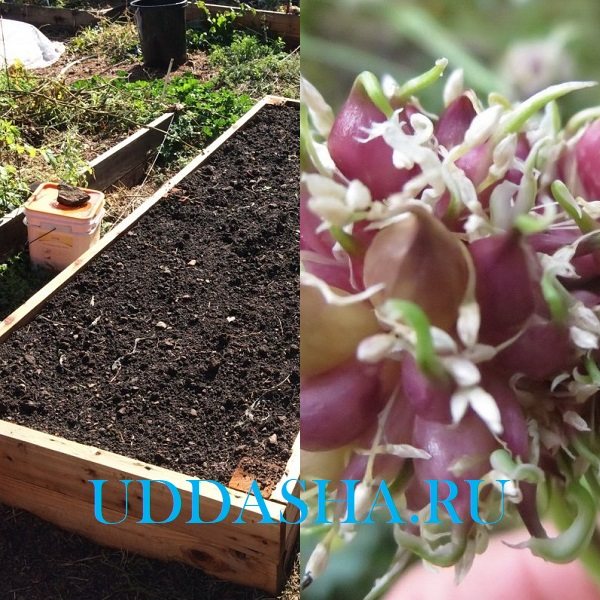
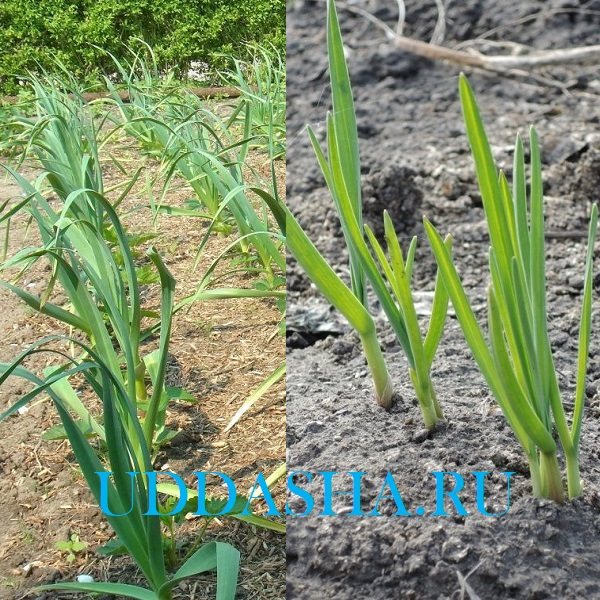

To grow a crop for two seasons without transplanting, you need to forget about the garden bed. It should be a high, warm ridge that forms at the base of the trench. First, you need to dig a trench up to 30 cm deep. Shredded tree branches are placed on the bottom, which, half-rotted boards. Green grass and silage are laid on top. Then the soil is laid, filled with mineral fertilizers and compost. Such a ridge will preserve nutrients for two seasons.
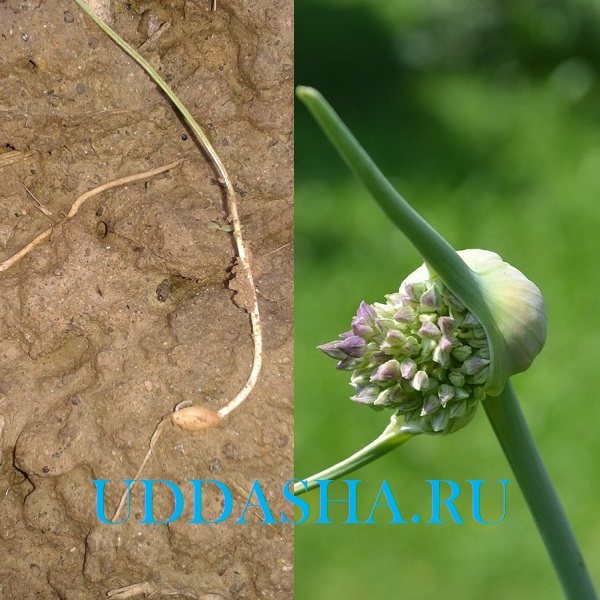

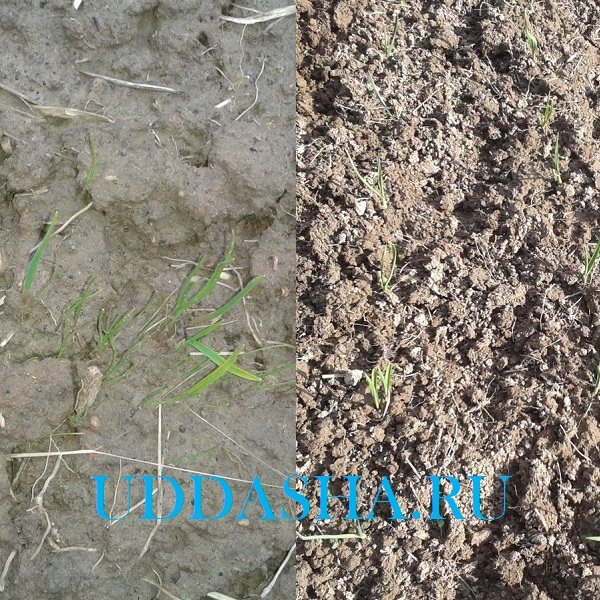

Planting agrotechnology is simple:
- the marking of the beds is done with distances between the lines of 20 - 25 cm;
- the seed is placed in the grooves at a distance of 1.5 cm from each other (if necessary, in the spring it will be possible to thin out the seedlings);
- sprinkle on top with a layer of well-rotted compost up to 5 cm high.
The bed is covered with spruce branches or dry straw with a sufficient layer to prevent freezing in winter.
Qualitative characteristics of the growing method
You should not neglect the method of propagation of garlic through bulbs, since it has a number of advantages:
- Promotes rejuvenation of seed material and preservation of the best varietal characteristics.
- Prevents the spread of diseases such as stem nematodes that are transmitted through soil.
- The costs of commercial products for planting material are reduced. A large number of achenes in the inflorescence allows you to quickly get the required amount of planting material of the varieties you like.
The only drawbacks of this method of reproduction is a rather long waiting period for a marketable multi-toothed bulb (2-3 years).
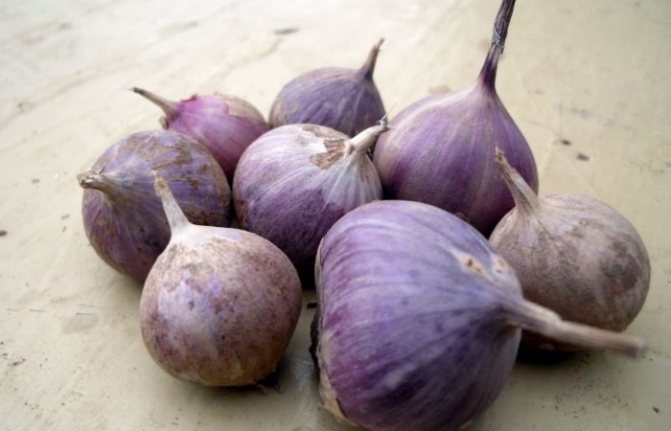

Soil preparation
The culture prefers to grow in nutritious and loose soils with neutral acidity. The site needs to be dug onto the bayonet of a shovel and break up the clods. To deoxidize the soil, 300 g of lime is added to it for each square meter.
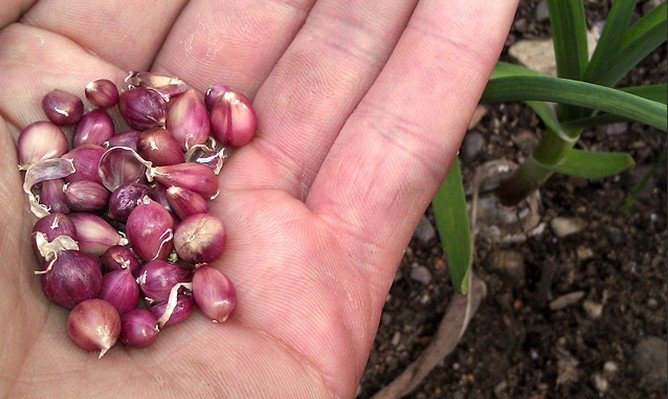

To fertilize the soil, humus and mineral additives are introduced (per sq. M):
- humus - 5 kg;
- superphosphate - 30 g;
- calcium chloride - 20 g.
Important! You should not plant the plant after nightshade crops - they leave fungal spores in the soil.
Cultivation and storage of planting material
How to grow bulbs correctly
To teach high-quality air bulbs, during the growing season of the multi-toothed bulbs of the desired variety, they leave a healthy, formed peduncle, which will give up to 100 pieces of bulbs. The mother plant should be free of disease signs and receive timely adequate mineral nutrition, watering and care. The best time to sow bulbs in order to prevent them from freezing is early spring. But sowing before winter is also possible.
Advice! To prepare for sowing, the bulbs are kept in a refrigerator and disinfected in a weak solution of copper sulfate or potassium permanganate.
Bulbs planted in autumn produce bulbs about 3 mm in size. They are not divided into teeth, and are called one-toothed. Planted in the fall, next year they grow into large heads, the weight of which can reach 150 g.
- Drying.
The one-tooth is removed when the tips of the foliage begin to turn yellow. If you are late with harvesting, the tops will quickly dry out and die off, and the bulbs will go deep into the soil and it will be difficult to find them. When harvesting, the roots are trimmed with staples or dug out with a shovel, the remains of the soil are shaken off and laid in rows to dry.
Do not dry garlic under the scorching sun so that the bulbs do not get burned. It is better if it is a well-ventilated room or a shed.
- Treatment.
After complete drying, the remains of the stem are wiped by hand and the roots are cut off.
- Storage.
If the stalk of the one-toothed tooth does not break off, you can tie the heads into bunches and hang them in the attic or shed. If the stems come off, the heads are stirred in a thin layer in baskets, wooden, ventilated boxes, canvas bags or paper bags. The main thing is to store the planting material in a dry, cool, well-ventilated area.
Attention! Bulbules grown in inflorescences are left on the peduncle until the film that holds them begins to crack. Such peduncles are cut at a height of 25-30 cm and laid out for drying. If you are late in completing the work, the seeds will spill out onto the ground and germinate.
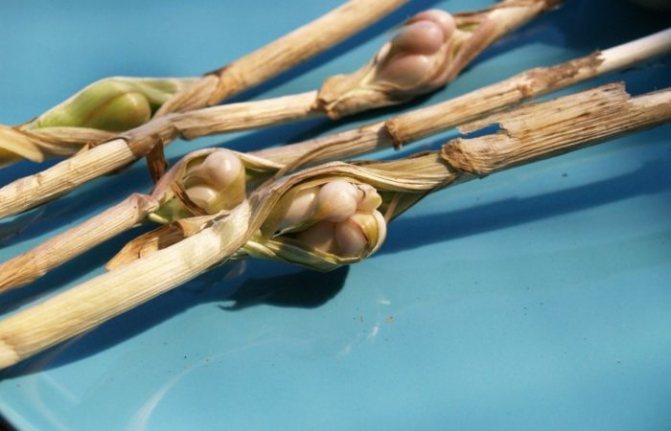

How to save until spring?
If everything is clear with the autumn planting. Until the moment of sowing, the seed material is perfectly preserved in the attic, then until spring they must be somehow stored. Before storing the bulbs of garlic, you need to carefully sort and calibrate them. Do not store large and small seeds together. It will be difficult for them to create favorable conditions.Large bulbs are not afraid of temperature extremes and high humidity. They can be stored in canvas bags or paper bags. For a fine fraction of garlic seeds, it will be necessary to create more favorable conditions. It is recommended to store them in a glass container with a lid that allows air to circulate freely. The jar should stand in a dark, cool place. When exposed to direct sunlight, these seeds will begin to germinate ahead of time.
The best way to preserve the bulbs of garlic until spring is to place them in a separate nylon bag and, tying them, place them among the stored onions. This vegetable will not allow the garlic seeds to lose moisture and will protect against temperature extremes and air humidity in the apartment.
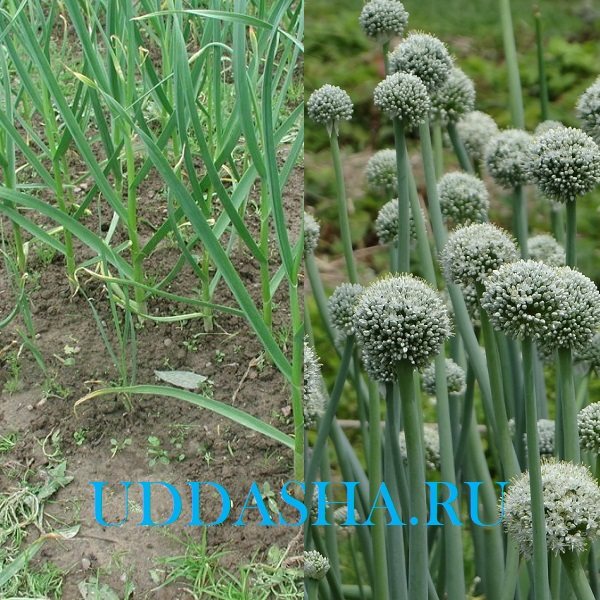



Ways of sowing garlic seeds
You can produce multi-clove commercial garlic from a set in different ways:
Planting in the fall before winter
Sowing before winter is more suitable for regions with a temperate climate, since under the influence of severe frosts, a significant part of the seedlings can die. Under the influence of low temperatures, small bulbs can be squeezed out by the frozen soil to the surface.
- Timing.
Sowing in winter for the production of one-toothed cloves is carried out at the same time as planting winter cloves. Depending on the region and weather conditions, the optimal timing occurs at the end of September - October, 30-40 days before the onset of frost.
- Landing scheme.
Gardeners in small areas practice sowing small bulbs in rows 3 cm deep, up to 5 cm - larger ones, with row spacing from 20 to 30 cm. 4-6 rows are formed on one ridge. Such crops are easier to weed and loosen. On 1 m, 30-40 g of small seeds are sown and 70-80 g of larger ones.
- Soil preparation.
Suitable for planting are loamy and sandy loam, without waterlogging, soils filled with humus 6-10 kg / sq. m. and phosphorus-potassium fertilizer (potassium monophostat 15 g per 1 sq. m. and whether another). Wood ash works effectively, it can be added 1-2 glasses per 1 sq. m. The soil can be disinfected with a weak solution of potassium permanganate or copper sulfate.
The soil is prepared a couple of weeks before planting, dug to a depth of 20-25 cm and left to compact. When landing in freshly dug soil, it is difficult to determine the planting depth.
- How to hide.
Planting is protected from freezing by mulching with peat, humus, fallen leaves, grass, spruce branches. For snow retention, tree branches and shrubs are used. In early spring, the mulch is harvested and the soil is harrowed.
How to plant in spring?
- Timing.
Spring sowing of air bulbs is carried out at the earliest possible date. Since the culture is winter-hardy, cool spring weather will not hurt, and soil moisture will allow the bulbs to quickly take root and form a good harvest of one-toothed by July.
- Landing scheme.
It is possible to sow bulbs in wide strips (6-8 cm) with a distance between strips of 45-50 cm, ribbons of 5-10 lines in each and row spacing of about 70 cm and in a simple ordinary way, as when sowing before winter.
- Soil preparation.
It is carried out in the fall, filled with humus and phosphorus-potassium fertilizers. In spring, you can add ash, loosen the soil with a pitchfork, make rows and sow air bulbs to a depth of 3 cm.
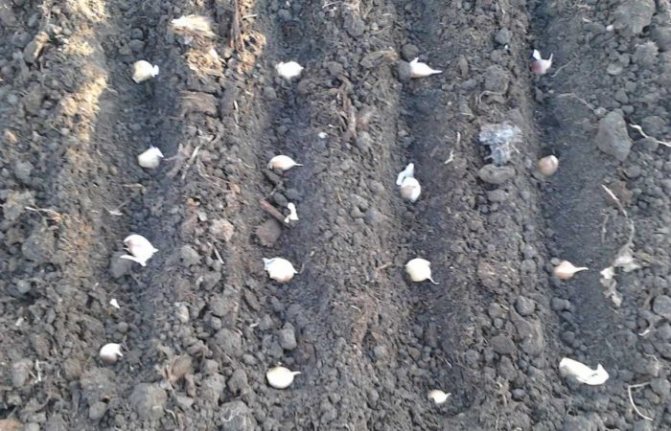

After drying and preparation, the resulting one-toothed bulbs are ready for the production of a full-fledged multi-toothed bulb by planting before winter, in the same way as the cloves.
To get multi-toothed heads during spring planting, the set must be larger than 1 cm in diameter.
Non-stop method
There are ways to grow garlic through sowing air bulbs without digging out the resulting one-tooth. Seeds are sown in the usual way, but the seed consumption is halved.
- With the one-year winter method, sowing is carried out at an earlier date - in June-July. The seeds should sprout and form good foliage before winter, but not the head.Next year, the plants will begin to actively develop and will produce multi-toothed bulbs by the middle of summer.
- With a two-year cultivation method, sowing seeds is carried out at the same time as planting cloves. Depending on the region, this is the end of September - October. The bulbs are sown half as much as the cloves. In the summer of next year, the one-toothed will be ready, but they are not dug out, but left to winter in the ground. In the spring, the garlic will sprout and grow like a regular crop. In July, the bulk of the one-toothed bulb will produce a full-fledged multi-toothed bulb.
In the video, the agronomist shows how she plants and propagates garlic with bulbs.
https://youtu.be/1RQyxhkITXA
Spring planting outdoors
Some gardeners plant garlic bulbs in spring with seedlings. This speeds up the maturation process. In one season, you can get a fairly large size, suitable for human consumption. The method is quite controversial, it is easier to plant directly into open ground.
An important question is when to plant garlic bulbs in spring, how to choose the right timing. Here the answer is unequivocal - the sooner the better. Therefore, the garden must be prepared in the fall. It should be light, well-structured soil. It is desirable to arrange a warm high bed. Under such conditions, the development of the tooth will be more intensive.
We plant the bulbs of garlic in the spring as soon as the snow melts. Cover the bed with black foil for heating for 3 - 4 days. Then spill with boiling water with the addition of manganese and iodine. The next day, you can sow in a band manner.
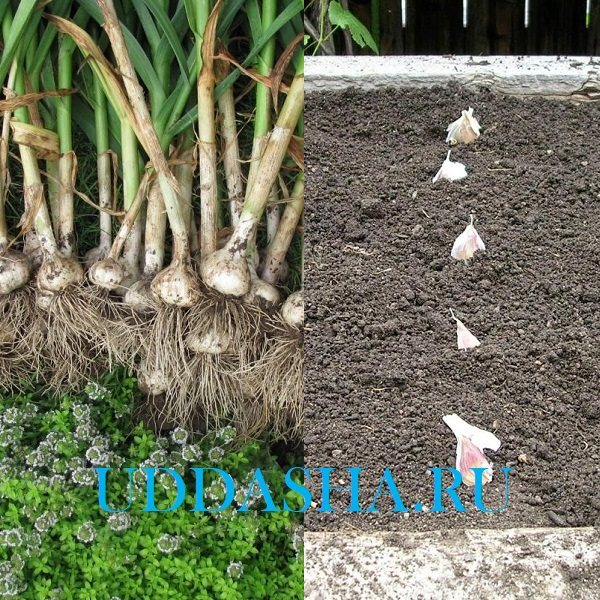

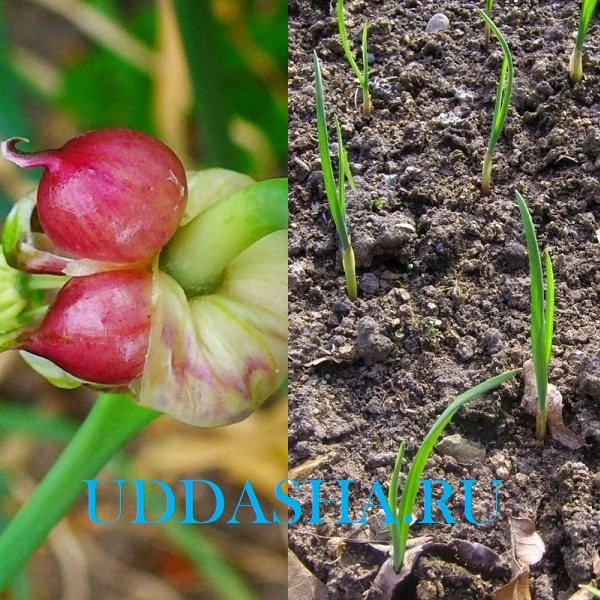

Planting garlic bulbs in spring can be done in two ways:
- for growing seed, which will be dug out and re-planted in the fall, the seeding depth is no more than 2 cm;
- for planting without harvesting in summer and transplanting in autumn, the deepening is done by 4 - 5 cm.
Before planting, a complex mineral fertilizer must be applied to the soil (nitrogen, potassium and phosphorus content of 20, 30 and 50%). Manure is strictly prohibited. It leads to the appearance of many diseases and acidification of the soil. You can fill the bed with dolomite flour and a reasonable amount of compost (no more than 1 bucket per 1 m2).


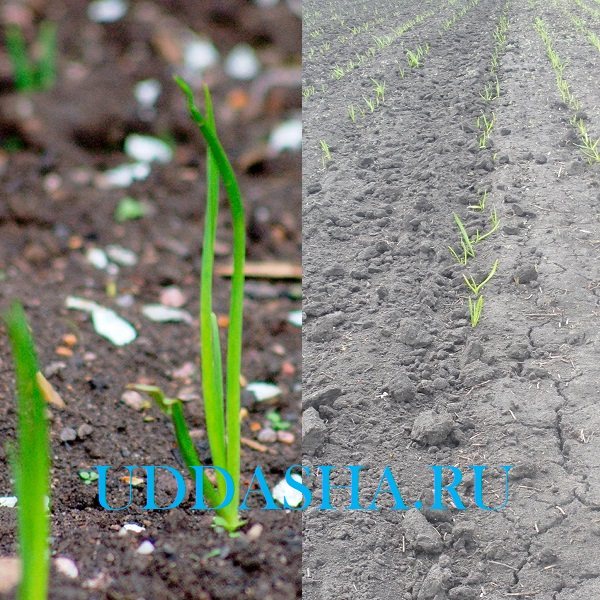

Airborne landing
Garlic with air bulbs can be planted 2 times a year:
- winter - 35-45 days before the start of frost (between September 20 and October 10);
- spring - in early spring, as soon as planting can begin.
The method of planting air nodules in a private garden is a standard lowercase, the distance between the lines (rows) should be 20-25 cm. The ideal seeding proportion is 40-50 bulbs per running meter.
Embedment depth:
- for nodules with a diameter greater than 5 mm - 4-5 cm;
- for nodules 3-5 mm - 3 cm.
Seeding material consumption:
- for nodules with a diameter greater than 5 mm - 300-500 kg / ha;
- for nodules 3-5 mm - 200 kg / ha.
After planting, mulch the soil with humus, sawdust or peat 2-3 cm thick.
Collection
Harvesting occurs when the foliage begins to turn yellow and dry. You need to collect on a sunny, not rainy day. The plant is dug up by the root. After that, the tubers are cleaned of sand. Then the vegetable is dried, dry tops are cut off. Dried garlic is placed in wooden boxes, cloth bags, wicker storage baskets.
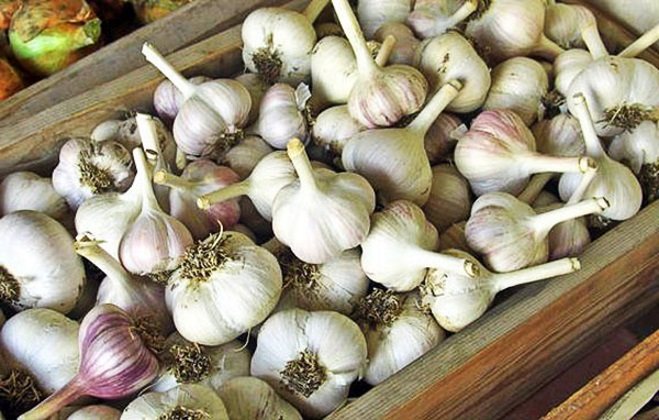

If you know when to plant garlic with bulbs before winter, take proper care of it, and harvest on time, you can grow a high-quality and very useful vegetable. Growing in this way allows you to always get healthy tubers. With its help, you can not be afraid that high-quality, rare varieties will simply degenerate in your garden. The only caveat is waiting for two seasons until you can hatch healthy, strong, ready-to-plant seeds.
What is a one-toothed tooth?
Seed material, which is intended for obtaining one-toothed teeth, is winter-hardy.It is practically not affected by diseases and various pests, in particular, nematodes. Brings a rich harvest, compared to the amount that is obtained as a result of planting ordinary cloves.
The puffed bulbs that are used to produce one-toothed are the size of barley or oats. They are small. The shape of some varieties may vary. Almost round or slightly oval teeth are found. In rare cases, they look like a pea.
Why is "Solo" little in demand on the Russian market?
Solo is positioned as a Chinese product, and the reaction of Russian consumers to Chinese goods is well known. Especially when it comes to food products. Solo garlic has proven itself excellently among housewives - it is well stored, does not germinate or dry out for a long time, is easy to clean and has good taste characteristics.
An overview of this variety of garlic can be seen in the video below:
The reason for the unprecedented longevity of solo garlic is suspected by experts and consumers, chemical processing. The Chinese are committed to pickling vegetables with all sorts of "chemistry" for the sake of preservation of the presentation. Russians, listening to nutritionists, prefer seasonal vegetables to Chinese products.
It's another matter when you grow such garlic yourself and then propagate it with your own, not purchased material.

